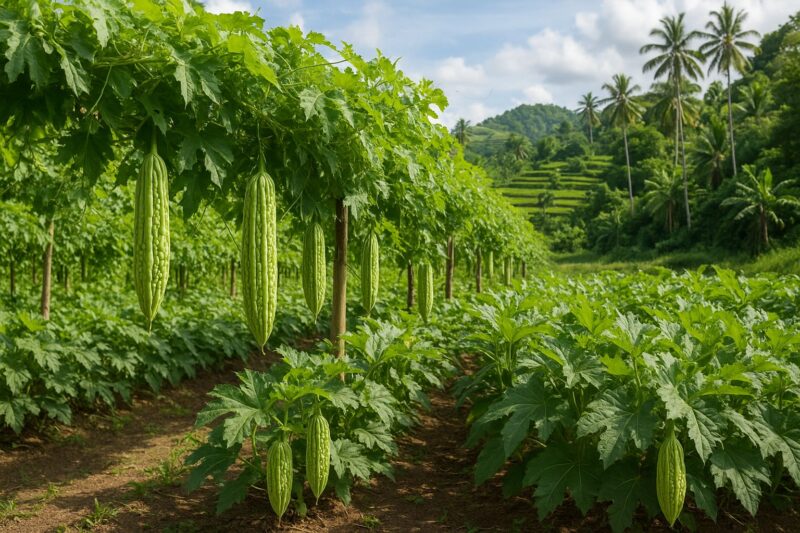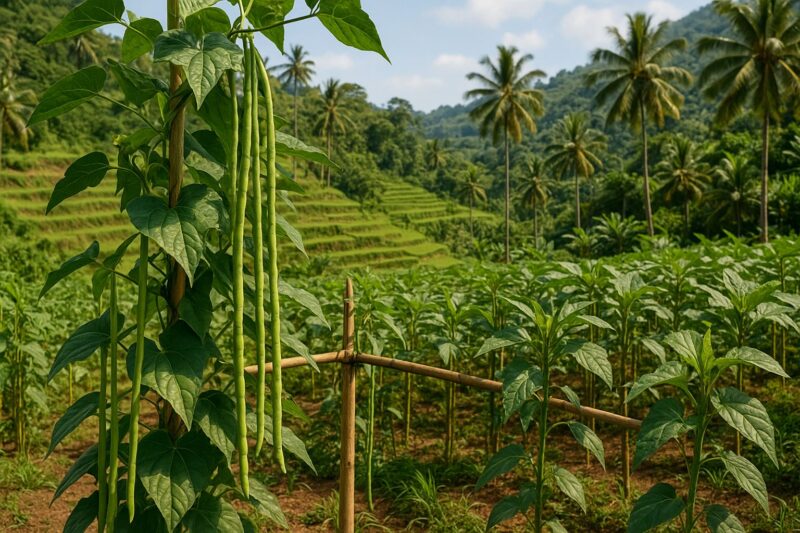Mustard greens—mustasa—bring peppery flavor and vibrant color to Filipino dishes, from stir-fried veggies in Cavite to hearty soups in Nueva Ecija. Fast-growing and cold-tolerant in our highlands, mustasa nevertheless adapts well to lowland gardens, producing harvests within four to six weeks of sowing. Yet, under tropical conditions it requires attention to variety choice, soil health, sowing timing, and simple pest checks. After several harvests in Bulacan—and learning from growers in Laguna’s uplands and rooftop plots in Quezon City—I’ve distilled a routine that delivers crisp, flavorful greens with minimal fuss. Here’s how to do it anywhere from Luzon to Mindanao.
Variety choice matters. Traditional local types yield broad, deeply lobed leaves with a mellow heat, while improved hybrid varieties produce uniform, upright plants with narrow leaves and a sharper bite. In Bulacan’s heat, I stick to hybrids—shorter, sturdier, and less prone to bolt in warm spells. Upland growers in Benguet often sow local varieties, appreciating their tolerance of cool nights and rich aroma. Try both: use hybrids for quick, reliable harvests and natives when you want that classic “something extra” in flavor.
Soil preparation sets the foundation. Mustasa thrives in loose, fertile soil with good drainage. In clay-rich plots (common in Pampanga and Bulacan), mix in two wheelbarrows of homemade compost and a handful of rice hull ash per ten square meters to lighten texture and add micronutrients. Sandy coastal soils—such as those around Iloilo—benefit from extra coconut coir or well-rotted manure to retain moisture without compacting. A soil pH between 6.0 and 7.0 keeps nutrients available.
Timing your sowing helps avoid bolting. Across lowland provinces, sow seeds from November through February, when nights dip below twenty-five degrees Celsius. In uplands—Baguio or Bukidnon—growers can extend planting into March. I’ve found that in Bulacan, late January sowings yield the best balance of growth and flavor; March plantings often bolt too quickly as the dry season heats up.
Sow seeds in shallow furrows about one centimeter deep, spacing rows thirty centimeters apart. In a small kitchen garden or containers, sprinkle seeds evenly in a tray or pot, then thin seedlings to ten centimeters apart once they develop two true leaves. Keep the seedbed evenly moist; germination occurs within five to seven days when soil temperatures stay between twenty-three and twenty-eight degrees Celsius.
Feeding keeps plants vigorous. At sowing, I lightly mix a handful of compost into each furrow. When seedlings reach four centimeters tall—about two weeks in—I side-dress with decomposed chicken manure or compost tea, applying beyond the drip line. Mustasa loves nitrogen, so compost tea every two weeks boosts leaf production; just avoid overwatering when foliage is dense.
Sunlight and shade balance is key. Mustasa grows best with four to six hours of direct morning sun and dappled shade in the afternoon. In open fields—like those in Bulacan—it performs well under partial shade cloth during the hottest months. On rooftops or balconies, position containers to catch cooler east-facing light, protecting plants from intense afternoon sun.
Pest vigilance is minimal but important. Flea beetles leave tiny holes in leaves; floating row covers during the first month prevent infestation. Leaf miners can trail white squiggles on foliage; prune affected leaves promptly and dispose of them away from the bed. Slugs and snails nibble tender shoots at night—handpick them at dawn or set up shallow trays of beer to lure and trap them.
Harvest begins as soon as plants reach twenty-five to thirty centimeters tall—usually four to six weeks after sowing. Snip outer leaves with scissors or harvest the entire plant at soil level for a bunch. Frequent picking—every five to seven days—encourages new growth and delays bolting. For baby greens, snip just the top two leaves, leaving the rest to develop.
One season in Bulacan, after an unexpected heatwave in February, my January-planted mustasa bolted early. I quickly sowed a fresh batch under shade cloth, and within a month I was back in business—proof that quick turnarounds are possible with fast-maturing greens.
Whether you grow mustasa in open beds, raised containers, or rooftop planters, mastering soil health, sowing timing, balanced feeding, light management, and simple pest checks will bring you crisp, nutritious mustard greens across the Philippines. It’s a versatile, rewarding crop that responds swiftly to your care.
I’m open for consulting and speaking opportunities on sustainable vegetable production and urban agriculture nationwide. Let’s grow together.
#Mustasa #MustardGreens #PhilippineFarming #SustainableAgriculture #UrbanGardening #ConsultingAvailable #SpeakingOpportunities




